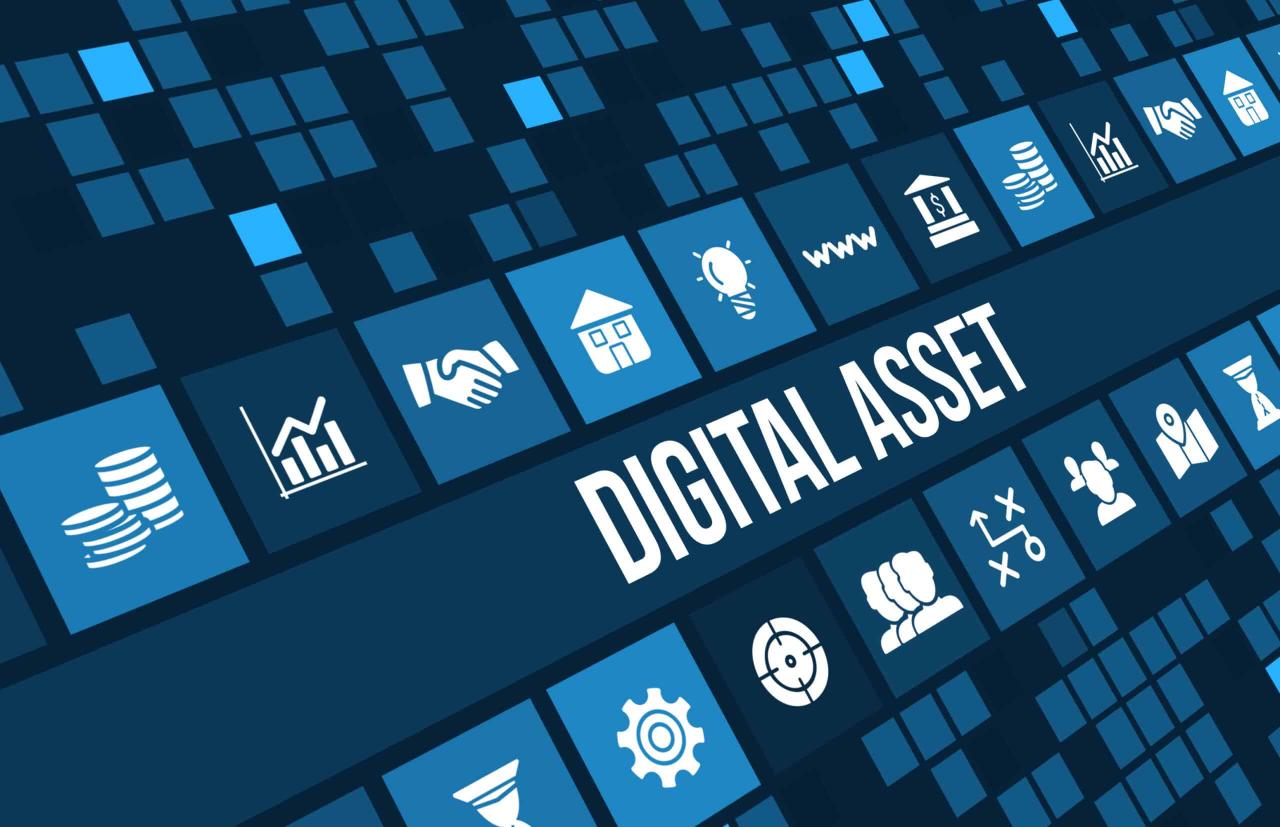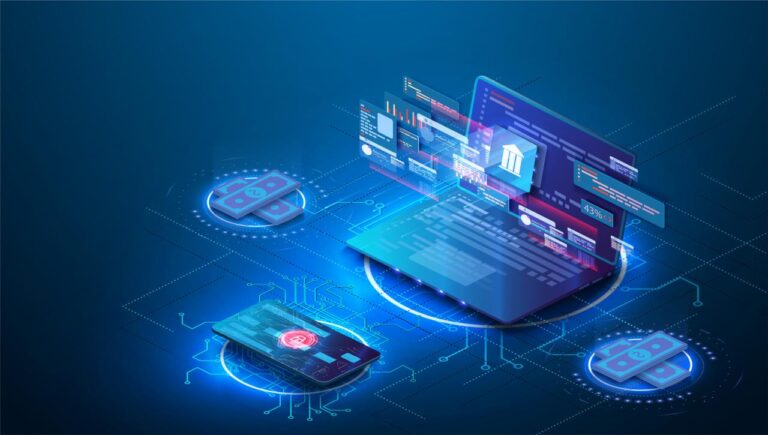What Are Digital Assets?

At its simplest, a digital asset is anything that exists in a binary format and comes with the right to use it. This definition, however, has expanded significantly with the advent of blockchain technology. Today, when we talk about the “digital asset boom,” we largely refer to assets that derive their value, security, and immutability from decentralized ledger technologies, primarily blockchain.
A. The Blockchain Foundation
The blockchain is the underlying technology that powers most of the digital assets we discuss today. It’s a distributed, immutable ledger that records transactions across a network of computers.
- Decentralization: Unlike traditional databases controlled by a single entity (like a bank), a blockchain is maintained by multiple participants. This removes single points of failure and central control.
- Immutability: Once a transaction is recorded on the blockchain (in a “block”), it’s cryptographically linked to the previous blocks, making it virtually impossible to alter or delete. This creates a transparent and unchangeable record.
- Transparency (Pseudonymous): While individual identities are typically not revealed (pseudonymity), all transactions on a public blockchain are visible to everyone on the network. This fosters trust and reduces fraud.
- Security: Cryptographic principles protect transactions and data, making the system highly secure against tampering.
B. Tokenization
Tokenization is the process of converting rights to an asset (physical or digital) into a digital “token” on a blockchain. These tokens represent ownership or utility and can be easily transferred and traded.
- Fungible Tokens: These are interchangeable, meaning each unit is identical to another. Cryptocurrencies like Bitcoin or Ethereum are fungible tokens. One Bitcoin is always equal to another Bitcoin.
- Non-Fungible Tokens (NFTs): These are unique and non-interchangeable, representing ownership or proof of authenticity of a unique item, whether digital (art, music, virtual land) or a real-world asset.
The Diverse Landscape of Digital Assets
The digital asset ecosystem is vast and continually expanding, encompassing various categories, each with unique characteristics and use cases.
A. Cryptocurrencies
Cryptocurrencies are perhaps the most well-known type of digital asset. They are decentralized digital currencies designed to work as a medium of exchange using cryptography to secure transactions and control the creation of new units.
- Bitcoin (BTC): The first and largest cryptocurrency, often called “digital gold.” Its primary use case is as a store of value and a peer-to-peer electronic cash system.
- Ethereum (ETH): The second-largest, known for its smart contract functionality. Ethereum allows developers to build decentralized applications (dApps) and issue new tokens on its network.
- Altcoins: A broad category encompassing all cryptocurrencies other than Bitcoin. These often aim to improve upon Bitcoin’s design or serve different purposes (e.g., faster transactions, privacy features, specific industry applications).
- Stablecoins: Cryptocurrencies designed to minimize price volatility by being pegged to a stable asset, typically fiat currency like the US dollar (e.g., USDT, USDC). They combine the benefits of crypto (fast transactions, global reach) with the stability of traditional currencies.
B. Non-Fungible Tokens (NFTs)
NFTs have exploded in popularity, enabling verifiable ownership of unique digital items. Each NFT has a distinct identity recorded on a blockchain.
- Digital Art: Artists can tokenize their digital creations, providing verifiable authenticity and scarcity (e.g., Beeple’s “Everydays: The First 5000 Days”).
- Collectibles: Digital trading cards, virtual pets, or unique in-game items.
- Music and Media: Artists can release music albums or videos as NFTs, providing direct ownership and unique fan experiences.
- Virtual Land: Plots of land within metaverse platforms (e.g., Decentraland, The Sandbox) that can be bought, sold, and developed.
- Utility NFTs: NFTs that grant access to exclusive communities, events, or provide specific digital or real-world benefits.
C. Tokenized Securities and Real-World Assets (RWAs)
Beyond cryptocurrencies and NFTs, the concept of tokenization extends to traditional assets, creating new investment opportunities and improving liquidity.
- Security Tokens: Digital tokens that represent ownership in real-world assets like stocks, bonds, real estate, or even intellectual property. They are subject to securities regulations.
- Real Estate Tokenization: Fractional ownership of properties, making real estate investment more accessible and liquid for smaller investors.
- Commodity Tokens: Digital tokens backed by physical commodities like gold, silver, or oil, offering easier trading and storage.
D. Central Bank Digital Currencies (CBDCs)
Unlike decentralized cryptocurrencies, CBDCs are digital forms of a country’s fiat currency, issued and backed by its central bank.
- Features: Legal tender, highly stable, aims to offer benefits like faster payments, increased financial inclusion, and reduced costs.
- Distinction from Crypto: CBDCs are centralized, controlled by the government, and typically don’t involve the price volatility associated with cryptocurrencies like Bitcoin. They are digital cash, not investment assets in the same way.
E. Metaverse Assets and GameFi Tokens
The emerging Metaverse and GameFi (Gaming Finance) sectors are creating a new category of digital assets essential for virtual economies.
- Virtual Land: As mentioned with NFTs, plots of land within virtual worlds.
- In-Game Assets: Characters, weapons, skins, or other items that players can own, trade, and sometimes earn real-world value from.
- GameFi Tokens: Cryptocurrencies used within play-to-earn games, allowing players to earn actual tokens by playing, which can then be traded on exchanges.
The Underlying Technology and Ecosystem

Understanding the various layers and components that support digital assets is crucial for grasping their functionality and potential.
A. Smart Contracts
Smart contracts are self-executing contracts with the terms of the agreement directly written into lines of code. They run on a blockchain (like Ethereum’s network) and automatically execute when predefined conditions are met.
- Automation: Eliminates the need for intermediaries, reducing costs and delays.
- Transparency: All parties can view the terms of the contract on the blockchain.
- Trustless: Execution is guaranteed by code, not by trusting a third party.
- Applications: Powering DeFi, NFTs, supply chain management, and more.
B. Decentralized Finance (DeFi)
DeFi is an umbrella term for financial applications built on blockchain technology. It aims to recreate traditional financial services (lending, borrowing, trading, insurance) without central intermediaries like banks or brokers.
- Lending & Borrowing: Users can lend out their crypto to earn interest or borrow crypto by providing collateral, all governed by smart contracts.
- Decentralized Exchanges (DEXs): Platforms that allow users to trade cryptocurrencies directly with each other without a central order book or intermediary.
- Yield Farming & Staking: Strategies to earn rewards by providing liquidity to DeFi protocols or locking up cryptocurrency to support a blockchain network.
C. Web3
Digital assets are a core component of Web3, the envisioned next generation of the internet, which aims to be decentralized and user-centric, built on blockchain technology.
- User Ownership: Users have more control over their data and digital identities.
- Decentralized Applications (dApps): Applications built on blockchain that run without central servers.
- Creator Economy: Digital assets (like NFTs) empower creators by giving them direct ownership and monetization channels, bypassing traditional gatekeepers.
Opportunities and Potential of the Digital Asset Boom
The rise of digital assets presents a myriad of opportunities across various sectors, promising to revolutionize finance, art, gaming, and beyond.
A. Enhanced Accessibility and Financial Inclusion
Digital assets, particularly cryptocurrencies, can provide financial services to the “unbanked” or “underbanked” populations globally.
- Lower Barriers to Entry: No need for traditional bank accounts, just a smartphone and internet connection.
- Faster and Cheaper Transactions: Cross-border remittances can be significantly faster and less expensive than traditional banking channels.
- New Investment Avenues: Democratizing access to assets like real estate or private equity through tokenization.
B. Greater Efficiency and Transparency
Blockchain technology fundamentally improves the efficiency and transparency of many processes.
- Reduced Intermediaries: Smart contracts and decentralized networks cut out middlemen, lowering costs and speeding up transactions.
- Immutable Records: Provides a single source of truth, reducing disputes and enhancing trust in supply chains, voting systems, and more.
- Automated Processes: Smart contracts automate complex agreements, ensuring timely and accurate execution.
C. New Business Models and Creator Economy
Digital assets are fostering entirely new economic models and empowering creators.
- Play-to-Earn Gaming: Players can earn valuable digital assets by engaging with games.
- NFT Marketplaces: Creating direct sales channels for artists and creators, bypassing galleries and traditional distributors.
- Decentralized Autonomous Organizations (DAOs): New forms of organizations governed by code and token holders, allowing for more transparent and community-driven decision-making.
D. Investment Potential
For investors, digital assets offer potentially high returns, albeit with significant risk.
- High Growth Potential: Early adoption of emerging technologies can yield substantial profits.
- Diversification: Can offer a low correlation to traditional asset classes, providing diversification benefits for a portfolio.
- Innovation-Driven Growth: Investing in projects at the forefront of technological innovation.
Risks and Challenges in the Digital Asset Space
Despite the immense potential, the digital asset boom also comes with significant risks and challenges that investors and users must be aware of.
A. Price Volatility
Cryptocurrencies, especially, are known for extreme price swings, which can lead to substantial gains or losses in short periods.
- Market Sentiment: Highly influenced by news, social media, and speculative trading.
- Regulatory Uncertainty: Shifting regulations can cause market reactions.
- Lack of Intrinsic Value (for some): Unlike a company stock, many cryptocurrencies don’t have underlying earnings or assets, making their valuation purely based on supply and demand.
B. Regulatory Uncertainty
The regulatory landscape for digital assets is still evolving globally, creating uncertainty for businesses and investors.
- Varying Approaches: Different countries and jurisdictions have diverse stances on classifying and regulating digital assets.
- Consumer Protection: Governments are grappling with how to protect consumers from scams and market manipulation in this new space.
- Taxation: Tax rules for digital assets are complex and vary significantly.
C. Security Risks and Scams
The decentralized and often nascent nature of digital asset technologies makes them vulnerable to various security threats and malicious actors.
- Hacks and Exploits: Smart contract vulnerabilities, exchange hacks, and phishing attacks can lead to loss of assets.
- Rug Pulls and Ponzi Schemes: Fraudulent projects designed to defraud investors.
- Lack of Recourse: Unlike traditional banking, there’s often no central authority to recover funds lost due to fraud or error.
- Private Key Management: The responsibility for securing private keys (which control access to digital assets) falls solely on the user. Loss of keys means permanent loss of assets.
D. Scalability and Energy Consumption
Some major blockchains face challenges with scalability (processing a high volume of transactions quickly) and environmental concerns due to their energy consumption (especially Proof-of-Work systems like Bitcoin).
- Transaction Speed/Fees: During peak network usage, transaction speeds can slow down, and fees can skyrocket.
- Environmental Impact: The energy required for mining certain cryptocurrencies has drawn criticism and environmental concerns.
E. Complexity and Knowledge Barrier
The technical nature of digital assets can be a significant barrier to entry for many potential users and investors.
- Technical Jargon: Understanding terms like “smart contracts,” “gas fees,” “staking,” “liquidity pools” requires effort.
- Due Diligence: Thorough research is essential to avoid scams and make informed investment decisions, which can be time-consuming.
Investing in Digital Assets
For those considering investing in digital assets, a cautious and informed approach is paramount.
A. Education First, Investment Second
Never invest in something you don’t understand. Dedicate time to learning the fundamentals of blockchain, cryptocurrencies, and the specific projects you’re interested in.
- Reliable Sources: Follow reputable news outlets, academic research, and established crypto analysts.
- Understand Whitepapers: Read the whitepapers of projects to understand their technology, vision, and tokenomics.
B. Start Small and Only Invest What You Can Afford to Lose
Given the inherent volatility, consider digital assets as a speculative portion of your portfolio.
- Allocate a Small Percentage: A common recommendation is to allocate no more than 1-5% of your total investment portfolio to highly speculative assets like cryptocurrencies.
- Risk Capital: Only use capital that you are prepared to lose entirely without impacting your financial well-being.
C. Diversify Your Digital Asset Holdings
Just like traditional investments, diversification is key.
- Spread Across Categories: Don’t put all your money into one cryptocurrency or one NFT collection. Diversify across different types of digital assets (e.g., Bitcoin, Ethereum, a few altcoins with strong use cases).
- Avoid Over-Concentration: Don’t become overly concentrated in a single digital asset.
D. Secure Your Assets
Security is paramount in the digital asset space.
- Hardware Wallets: For significant holdings, use a hardware wallet (e.g., Ledger, Trezor) to store your private keys offline, protecting them from online hacks.
- Software Wallets: For smaller amounts or frequent transactions, use reputable software wallets (e.g., MetaMask).
- Strong Passwords and Two-Factor Authentication (2FA): Always enable 2FA on exchanges and wallets, and use strong, unique passwords.
- Beware of Phishing: Be highly suspicious of unsolicited messages or links that ask for your private keys or seed phrase.
- Regular Backups: Back up your seed phrase (recovery phrase) and store it securely offline in multiple locations.
E. Stay Informed on Regulations
The regulatory environment is fluid. Keep an eye on new laws and guidelines that could impact your digital asset holdings, particularly regarding taxation.
Conclusion
The digital asset boom represents a paradigm shift in finance, technology, and society. While still in its relatively early stages, with inherent volatility and regulatory challenges, the underlying innovations of blockchain, tokenization, and decentralized networks promise a future of greater transparency, efficiency, and accessibility. By understanding the core concepts, recognizing the diverse landscape of digital assets, embracing a cautious investment approach, and committing to continuous learning, you can position yourself to navigate this exciting new frontier. The digital economy is here to stay, and understanding its assets is key to participating in its evolution.



